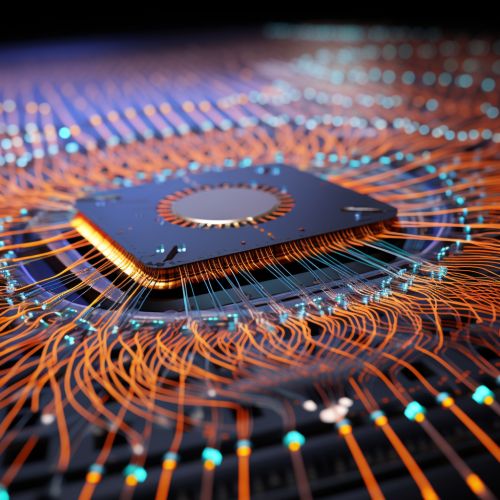Nanoscale Fluid Dynamics
Introduction
Nanoscale fluid dynamics, also known as Nanofluidics, is a sub-discipline of fluid dynamics that deals with the behavior, manipulation, and control of fluids that are confined to structures of nanometer (typically 1–100 nm) characteristic dimensions. These fluids are subject to quantum mechanical effects, which can create interesting and unique properties.
Nanoscale Phenomena
In the realm of nanoscale fluid dynamics, the traditional laws of fluid dynamics do not always apply. Instead, the fluids are subject to a variety of nanoscale phenomena. For example, the Knudsen number, which is the ratio of the molecular mean free path length to a representative physical length scale, becomes significant in nanoscale fluid dynamics. This can result in slip-flow or transition-flow regimes, where the flow is not entirely continuum or free-molecule, but somewhere in between.


Quantum Mechanical Effects
One of the most significant aspects of nanoscale fluid dynamics is the impact of quantum mechanical effects. At the nanoscale, the wave-like nature of particles becomes significant, leading to phenomena such as quantum tunneling and quantum entanglement. These effects can have a profound impact on the behavior of fluids at the nanoscale, leading to unique and often counterintuitive behaviors.
Applications
Nanoscale fluid dynamics has a wide range of applications, particularly in the field of nanotechnology. For instance, it plays a crucial role in the design and operation of microelectromechanical systems (MEMS) and nanoelectromechanical systems (NEMS). These systems often involve the manipulation of fluids at the nanoscale, and understanding the unique properties of these fluids is essential for their successful operation.
Challenges and Future Directions
Despite the significant progress that has been made in understanding nanoscale fluid dynamics, there are still many challenges to be overcome. For example, the quantum mechanical effects that dominate at the nanoscale are not fully understood, and more research is needed to fully exploit these effects for practical applications. Furthermore, the fabrication and manipulation of nanoscale structures is still a challenging task, and advancements in these areas will be crucial for the further development of nanoscale fluid dynamics.
